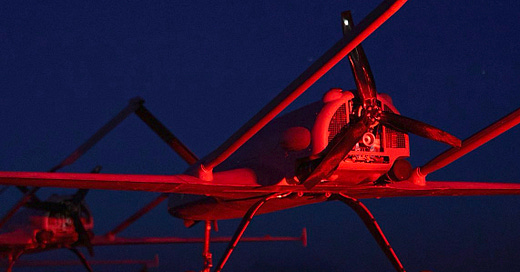Ukrainian Drones Just Found, and Blew Up, the Factories Making Russia's Deadly Glide Bombs
Twice in two months, drones struck the Energia battery plant in Yelets, Russia
You can’t plug just any battery into a precision-guided missile or bomb. Military-grade batteries have to be more rugged, more reliable and more energy-dense than civilian batteries are.
Which is why the Ukrainian Unmanned Systems Forces has singled out Russia’s biggest military battery maker for back-to-back air strikes. On May 23 and again on July 3, the USF struck the sprawling facility belonging to the Energia enterprise in Yelets, 160 miles from Ukraine in Russia’s Lipetsk Oblast.
It’s an urgent effort. Ukrainian forces were already struggling to shoot down or jam the thousands of cruise and ballistic missiles, Shahed kamikaze drones and UMPK glide bombs that the Russians fling at Ukrainian defenses, cities and power plants every month.
They’re struggling even more now that the administration of U.S. Pres. Donald Trump has allied itself with Russia, and halted shipments of air-defense missiles to Ukraine.
Increasingly starved of air-defenses, the Ukrainians are aiming “left of the boom,” to borrow U.S. Army slang. They’re striking harder, more often and deeper inside Russia with their drones, aiming to suppress Russian munitions by damaging the factories that produce them.
The July raid, carried out by the Ukrainian USF’s elite and secretive 14th Unmanned Aerial Systems Regiment, landed hits on an Energia workshop in Yelets. “Explosions were recorded,” USF noted. “The results of the strike are being verified.” (See video below.)
The Energia plant, which is under foreign sanctions, produces military batteries. “In particular, for universal planning and correction modules,” or UMPKs, according to the Ukrainian general staff in Kyiv.
Russian warplanes drop around 100 of the $20,000 UMPKs every day all along the 700-mile front line of Russia’s 41-month wider war on Ukraine. They’re a “miracle weapon,” according to the Ukrainian Deep State analysis group.
In fact, the satellite-guided UMPKs aren’t impossible to jam. But every time the Ukrainians introduce a new and better jammer, the Russians respond with a new and better navigation unit, which connects a glide bomb to Russia’s GLONASS satellite navigation constellation.
The best VNIIR-Progress Kometa-M nav unit has a whopping 16 antennas, each of which would need to be jammed to throw a UMPK off course. It may be easier, given Ukraine’s air-defense struggles, to target the nav units left of the boom.
Factories in flame
Last week, Ukrainian drones struck VNIIR-Progress’s Kometa-M factory in Cheboksary, 600 miles from Ukraine. Note that the Kometa-M draws 12 watts of power from a 52-volt battery built by Energia in Yelets—and the battery workshops are even farther left of the boom than the Kometa-M plant is.
While it’s hard to tell, from the few videos of the July 3 raid, what kinds of Ukrainian drones struck the Energia facility, consider that the plant isn’t exactly the hardest target on the USF’s long list. It’s within range of the branch’s smaller attack drones such as the Ukroboronprom AN-196 Furious.
The fiberglass Furious carries a 110-pound warhead farther than 500 miles under jam-resistant satellite guidance. The $200,000 drone can follow complex flight paths and change altitude in order to avoid Russian air-defenses. Ukrainian Pres. Volodymyr Zelensky anticipated Ukrainian industry would build 30,000 drones in the class of the Furious in 2025.
Once upon a time, Ukraine’s deep-strike force—the USF, the 14th UAS Regiment and other intelligence and strike entities—was constrained by U.S. demands. The administration of former U.S. Pres. Joe Biden supplied Ukraine with tens of billions of dollars worth of weapons and, in exchange, asked that Ukraine not strike inside Russia, especially with those U.S.-made weapons.
But Trump has not only declined to approve new aid, he has also blocked the shipment of aid Biden approved and paid for years ago. Increasingly armed with homegrown systems such as the Furious and no longer beholden to the Russia-aligned United States, Ukraine is free to continue—and escalate—its bombardment of Russian factories.
All that is to say, the second strike on Energia in two months probably won’t be the last strike.
Read more:
Ukrainians Built a Jammer That Tells Russian Drones They're In Peru
In August 2023, the Ukrainian defense ministry tasked the Night Watch electronic warfare team with a critical mission: defending the port of Reni from Russia’s Shahed drones.






